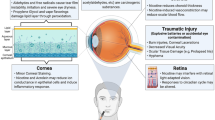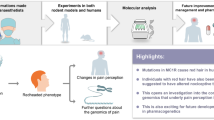Abstract
Purpose
Physiological markers that estimate sympathetic activation may be used to infer pain and stress in humans. To date, effective reproducible methods are invasive and pose an undesired risk to participants. Previous work in animal models has used infrared thermography to measure the temperature of the lacrimal caruncle region and may be a promising method for measuring stress and pain non-invasively. The current study aimed to determine whether this method is useful in humans.
Methods
Sixteen young healthy participants (age: 18–35) were recruited and underwent sympathetic activation using a cold pressor test (CPT) and a muscle chemoreflex (MCR), and completed a control trial. Throughout all trials, infrared thermographic imaging of the lacrimal caruncle, heart rate, heart rate variability, mean arterial blood pressure and pulse transit time were measured.
Results
Heart rate (MCR: 4 ± 3 bpm, CPT: 17 ± 4 bpm p < 0.01) and mean arterial pressure increased (MCR: 6 ± 2, CPT: 5 ± 2 mmHg, p < 0.01) and pulse transit time decreased (p = 0.03) with both sympathetic activation interventions. However, lacrimal caruncle temperature did not vary under any condition remaining at 35.2 ± 0.2 °C which was similar to baseline.
Conclusions
Our findings suggest infrared thermographic monitoring of eye temperature in humans does not reliably relate to sympathetic activation. This could be due to hemodynamic responses at the lacrimal caruncle that may be more complex than previously proposed with sympathetic activation. Alternatively, pulse transit time seems like a promising non-invasive measure of changes in sympathetic activation in humans.





Similar content being viewed by others
Abbreviations
- CPT:
-
Cold pressor test
- HR:
-
Heart rate
- HRV:
-
Heart rate variability
- IRT:
-
Infrared thermography
- MCR:
-
Muscle chemoreflex
- MAP:
-
Mean arterial pressure
- PTT:
-
Pulse transit time
- PWV:
-
Pulse wave velocity
- \(\dot {Q}\) :
-
Cardiac output
- SNA:
-
Sympathetic nervous activity
References
Anderson EA, Wallin BG, Mark AL (1987) Dissociation of sympathetic nerve activity in arm and leg muscle during mental stress. Hypertens 9:114–119. https://doi.org/10.1161/01.HYP.9.6
Bakdash JZ, Marusich LR (2017) Repeated measures correlation. Front Psychol 8:1–13. https://doi.org/10.3389/fpsyg.2017.00456
Barney CC, Hoch J, Byiers B et al (2015) A case-controlled investigation of pain experience and sensory function in neuronal ceroid lipofuscinosis. Clin J Pain 31:998–1003. https://doi.org/10.1097/AJP.0000000000000192
Bjarnegård N, Länne T (2010) Arterial properties along the upper arm in humans: age-related effects and the consequence of anatomical location. J Appl Physiol 108:34–38. https://doi.org/10.1152/japplphysiol.00479.2009
Bland JM, Altman DG (1995) Calculating correlation coefficients with repeated observations: part 1 -correlations within subjects. Br Med J 310:446
Drinnan MJ, Allen J, Murray A (2001) Relation between heart rate and pulse transit time during paced respiration. Physiol Meas 22:425–432
Esler M (2010) The 2009 Carl Ludwig Lecture: pathophysiology of the human sympathetic nervous system in cardiovascular diseases: the transition from mechanisms to medical management. J Appl Physiol 108:227–237. https://doi.org/10.1152/japplphysiol.00832.2009
Failla M, Grappiolo A, Emanuelli G et al (1999) Sympathetic tone restrains arterial distensibility of healthy and atherosclerotic subjects. J Hypertens 17:1117–1123
Fernández-Cuevas I, Bouzas Marins JC, Arnáiz Lastras J et al (2015) Classification of factors influencing the use of infrared thermography in humans: a review. Infrared Phys Technol 71:28–55. https://doi.org/10.1016/j.infrared.2015.02.007
Goldstein DS, Bentho O, Park M-Y, Sharabi Y (2011) Low-frequency power of heart rate variability is not a measure of cardiac sympathetic tone but may be a measure of modulation of cardiac autonomic outflows by baroreflexes. Exp Physiol 96:1255–1261. https://doi.org/10.1113/expphysiol.2010.056259
Hjemdahl P (1993) Plasma catecholamines–analytical challenges and physiological limitations. Baillieres Clin Endocrinol Metab 7:307–353
Kalfon R, Campbell J, Alvarez-Alvarado S, Figueroa A (2015) Aortic hemodynamics and arterial stiffness responses to muscle metaboreflex activation with concurrent cold pressor test. Am J Hypertens 28:1332–1338. https://doi.org/10.1093/ajh/hpv043
Kolosovas-Machuca ES, Martínez-Jiménez MA, Ramírez-GarcíaLuna JL et al (2016) Pain Measurement through temperature changes in children undergoing dental extractions. Pain Res Manag 2016:4372617. https://doi.org/10.1155/2016/4372617
Malik M, Bigger J, Camm A, Kleiger R (1996) Heart rate variability. Standards of measurement, physiological interpretation, and clinical use. Task Force of the European Society of Cardiology and the North American Society of Pacing and Electrophysiology. Eur Heart J 17:354–381
Mannerkoski MK, Heiskala HJ, Santavuori PR, Pouttu JA (2001) Transdermal fentanyl therapy for pains in children with infantile neuronal ceroid lipofuscinosis. Eur J Paediatr Neurol 5 Suppl A:175–177. https://doi.org/10.1097/AJP.0000000000000192
Mathias CJ (2003) Autonomic diseases: clinical features and laboratory evaluation. J Neurol Neurosurg Psychiatry 74(Suppl 3):iii31–i41
Meola C, Carlomagno GMG (2004) Recent advances in the use of infrared thermography. Meas Sci Technol 15:R27–R58. https://doi.org/10.1088/0957-0233/15/9/R01
Mourot L, Bouhaddi M, Regnard J (2009) Effects of the cold pressor test on cardiac autonomic control in normal subjects. Physiol Res 58:83–91
Ng AV, Callister R, Johnson DG, Seals DR (1993) Age and gender influence muscle sympathetic nerve activity at rest in healthy humans. Hypertens 21:498–503
Sinski M, Lewandowski J, Abramczyk P et al (2006) Why study sympathetic nervous system? J Physiol Pharmacol 57(Suppl 1):79–92
Stewart M, Schaefer A, Haley DB et al (2008) Infrared thermography as a non-invasive method for detecting fear-related responses of cattle to handling procedures. Anim Welf 17:387–393
Stewart M, Verkerk GA, Stafford KJ et al (2010a) Noninvasive assessment of autonomic activity for evaluation of pain in calves, using surgical castration as a model. J Dairy Sci 93:3602–3609. https://doi.org/10.3168/jds.2010-3114
Stewart M, Webster JR, Stafford KJ et al (2010b) Technical note: effects of an epinephrine infusion on eye temperature and heart rate variability in bull calves. J Dairy Sci 93:5252–5257. https://doi.org/10.3168/jds.2010-3448
Vallbo AB, Hagbarth K-E, Wallin BG (2004) Microneurography: how the technique developed and its role in the investigation of the sympathetic nervous system. J Appl Physiol 96:1262–1269. https://doi.org/10.1152/japplphysiol.00470.2003
Woodward TM (2008) Pain management and regional anesthesia for the dental patient. Top Companion Anim Med 23:106–114. https://doi.org/10.1053/j.tcam.2008.02.007
Zygmunt A, Stanczyk J (2010) Methods of evaluation of autonomic nervous system function. Arch Med Sci 6:11–18. https://doi.org/10.5114/aoms.2010.13500
Acknowledgements
We would like to thank Dr Neil Eves at the Centre for Heart, Lung and Vascular Health, University of British Columbia-Okanagan for loaning the applanation tonometry equipment.
Author information
Authors and Affiliations
Contributions
MR conceived of the project, JH and MR completed the data collection, JH analysed the data and wrote the draft manuscript, MR edited the manscript.
Corresponding author
Ethics declarations
Conflict of interest
The authors declare that they have no conflict of interest.
Additional information
Communicated by Keith Phillip George.
Rights and permissions
About this article
Cite this article
Huggins, J., Rakobowchuk, M. Utility of lacrimal caruncle infrared thermography when monitoring alterations in autonomic activity in healthy humans. Eur J Appl Physiol 119, 531–538 (2019). https://doi.org/10.1007/s00421-018-4041-6
Received:
Accepted:
Published:
Issue Date:
DOI: https://doi.org/10.1007/s00421-018-4041-6




